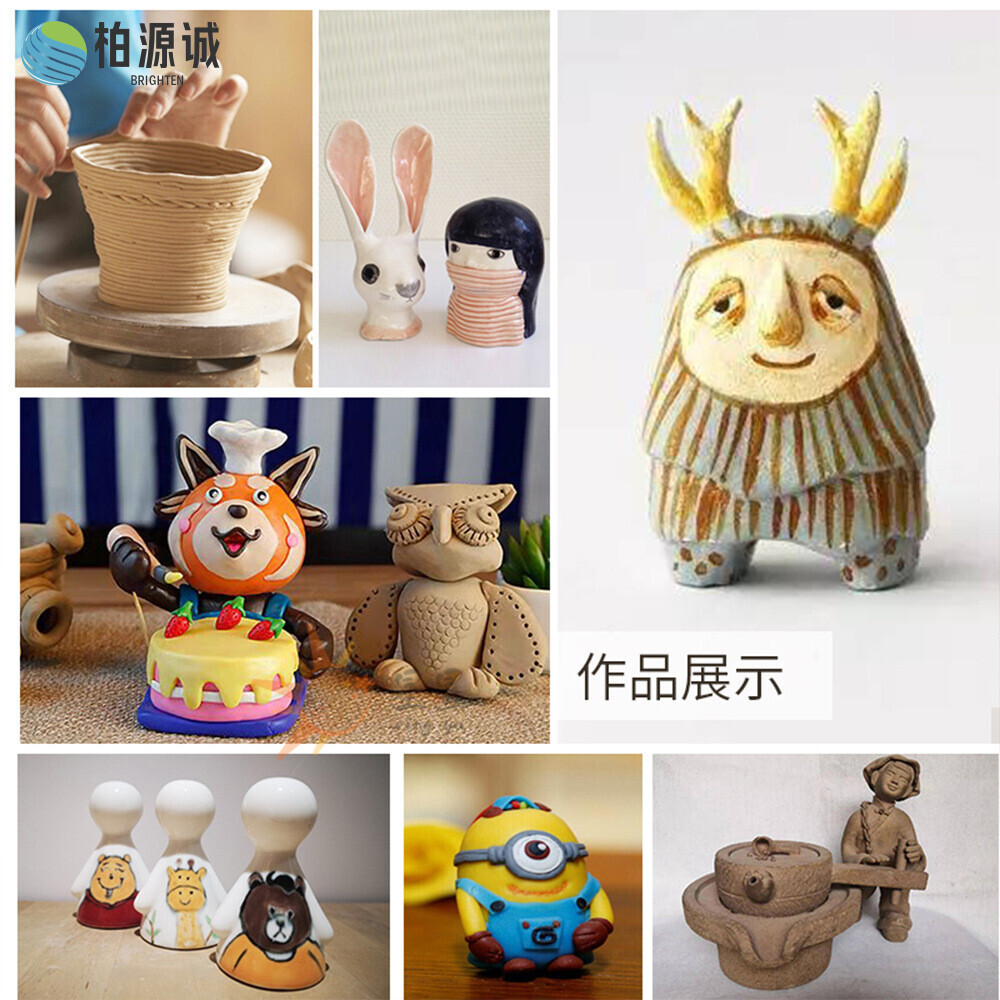- KNOWLEDGE/BLOG -

The secret of clay composition: starch-based vs. resin-based, which one is safer?
Clay is a widely used material for art and crafts, and its composition has a significant impact on the user experience and safety. This article will explore the three major types of clay raw materials - starch, pulp and PVA resin, and compare and analyze them from the perspectives of environmental protection, shaping power and price, to help you choose the clay that suits you more wisely.
1. Starch-based clay
Starch-based clay uses natural starch as its main raw material and has good biodegradability and environmental friendliness. Since starch is a renewable resource, this type of clay has less impact on the environment. In terms of plasticity, starch-based clay performs well, is easy to shape, and has strong detail expression. However, its disadvantages are that it is relatively expensive and is prone to drying and cracking after long-term use.
2. Paper Pulp-Based Clay
Paper pulp clay is made from waste paper pulp through a special process. This type of clay is also environmentally friendly because paper pulp is widely available and can be recycled. Paper pulp clay has moderate shaping power and is suitable for making some simple shapes. In terms of price, paper pulp clay is relatively affordable and suitable for mass consumers.
3. PVA resin-based clay
PVA resin-based clay is mainly composed of polyvinyl alcohol (PVA) resin, which has strong plasticity and stability. This type of clay can maintain a good shape after drying and is not easy to crack. However, from an environmental perspective, PVA resin has poor degradability, which puts a certain amount of pressure on the environment. In addition, the price of PVA resin clay is usually higher than that of starch-based and pulp-based clay.
4. Environmental Comparison
In terms of environmental protection, starch-based and pulp-based clays have obvious advantages. Both types of clays use renewable resources as their main raw materials and have good biodegradability. In contrast, PVA resin clays are less environmentally friendly and are not conducive to environmental protection.
5. Comparison of shaping power
From the perspective of shaping power, PVA resin clay has the strongest shaping ability and stability, and is suitable for making fine and complex shapes. Starch-based clay also performs well in shaping power and is suitable for works that require high detail expression. The shaping power of pulp-based clay is relatively weak, and it is more suitable for making simple shapes.
6. Price comparison
In terms of price, paper pulp-based clay is usually the most affordable, suitable for beginners and consumers with limited budgets. Starch-based clay is relatively expensive, and PVA resin clay is usually the most expensive option.
in conclusion
In summary, different types of clay have their own advantages and disadvantages in terms of environmental protection, shaping power and price. When choosing clay, you should weigh it according to your needs and budget. If you value environmental protection, you can choose starch-based or pulp-based clay; if you pursue high shaping power, PVA resin clay is a better choice. I hope this article can provide you with a useful reference in the selection and use of clay.
RECOMMENDATION
MAIN PRODUCTS
The company currently has 68 production lines, and its main products are super light clay, pearl mud, crystal mud, ramen mud, beach sand and other series of specifications, with an annual production capacity of more than 5,000 tons.
CONTACT US
